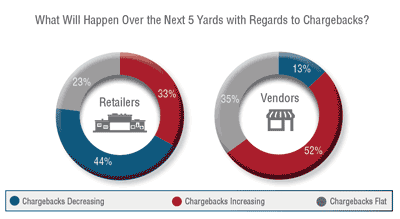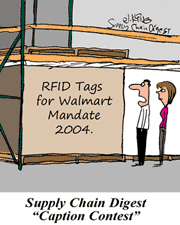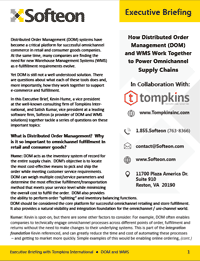"Digital Disruption" – It's Thrive, Survive or Perish
Just usually one week per year. SCDigest editor Dan Gilmore turns over the powerful First Thoughts podium to an guest contributor. This time, it is friend of SCDigest Rich Sherman, senior fellow at the Supply Chain Centre of Excellence at Tata Consultancy and long time supply chain analyst, who has taken this turn for SCDigest one or twice before. Below starts his column, on the impact of digitization on companies and supply chain ecosystems.
"Digital disruption will not necessarily be an industry-wide "extinction event." However, for many companies resisting changes to various market ecosystems, the result will be extinction.
| SHERMAN SAYS: |
If you are not leveraging new data and analytics today, if you are not building data and historical learning, you are behind.
WHAT DO YOU SAY?
Send us your
Feedback here
|
Species - and industries - rarely become extinct all at once, but the pace is accelerating. Take for example, the digital disruption to the video rental store industry. It went from boom to bust in just 10 years. So, you may think, how is this relevant to me and my company?
The biggest challenge people face is transforming from "chain" thinking to "system" thinking. We all operate in various ecosystems, from global geo-political to local communities. From a business perspective, companies operate in an industry or market ecosystem. As change occurs, it will have different impacts to those ecosystems.
Traditional "chain" reactions generally flow linearly and sequentially, like demand or supply activity variations. By contrast, ecosystem changes are nuclear, at the business or industry structural level, and flow in many different directions, with considerable collateral impact, such as how the DVD support ecosystems (packaging, distributors, etc.) were impacted by steaming video as much as the stores were.
Other extinction events are unfolding, such as in independently owned data centers, servers, desktops, and laptops, each abandoned for Cloud solutions and/or replaced by smart mobile devices.
Ecosystem Change Impacts Business and Operating Models
An ecosystem change impacts business models and disrupts the competitive landscape. eCommerce is an example of an ecosystem roiling companies and whole industries. There are a lot of business casualties (e.g., brick and mortar) stemming from the inability to quickly adapt to the new omnichannel business model and ecosystem.
There are also a number of companies that recognize the changes but are responding incorrectly and thus also facing extinction. Why? Most companies don't have the capital buffer to survive an ecosystem change. Those that do - the leaders - mask the impact that the ecosystem change is really having on the industry business model. By the time the laggards get it, they either become extinct or are swallowed up by the leaders or new entrants to the new ecosystem.
Enough about eCommerce - Transportation Drives All Commerce
Switching gears, I'd like to look at the impact that digital technologies are having and are going to have on vehicle (commercial and passenger) and transportation ecosystems. These changes will render the eCommerce and other industry ecosystem changes comparatively trivial, as every industry is impacted by the transportation ecosystem. Self-driving/autonomous vehicle adoption is an ecosystem change that will see many companies and even industries facing extinction. Here's my take:
Self-Driving and Autonomous Vehicle Adoption
While more and more passenger vehicles are being produced with self-driving capability, we're likely to see a more aggressive adoption by commercial fleets. The "platooning" pilots are demonstrating the capability to implement self-driving vehicles commercially. We will soon see driverless commercial vehicles emerging on the interstate system.
Our driver shortages and biggest capacity issues are with long haul freight movement. Imagine for a moment a transport-dedicated lane on all interstates. The "platoon" traffic flow on the lane would be controlled to synch the vehicles/platoons to a smooth, capacity optimized flow. Driverless loads would be diverted to "drop and hook" secured (freight security is a major issue) parking zones (also providing fuel, maintenance, and other vehicle services) at select exits. The vehicles drop the assigned load, pick up the next load or an empty trailer and re-enter the interstate for the next stop. Locally driven vehicles pick up full and empty trailers for "last mile" distribution and "re-load".
Can you think of how many issues and cost efficiencies result from this relatively simple to implement change?
But It's not so Simple - It's an Ecosystem
 Well, maybe it's not so simple. What will the impact be on carriers? Who will own the tractors? Who will provide the "control towers"? What will be the impact to the infrastructure and who will provide traffic control? What are the regulatory requirements? Well, maybe it's not so simple. What will the impact be on carriers? Who will own the tractors? Who will provide the "control towers"? What will be the impact to the infrastructure and who will provide traffic control? What are the regulatory requirements?
But despite those challenges, wouldn't it be nice to have all of that truck traffic synchronized to a single flow lane operating at a consistent speed while optimizing environmental, capacity, and resource utilization, easing of interstate congestion?
Democratizing Commerce
Ride-sharing services, like Uber, Lyft, and others, are examples of ecosystem change agents that will be leveraging the new self-driving/autonomous vehicle technology. They represent the "democratization" of commerce and will significantly alter the lifestyle and competitive industry landscape. Think of the impact on cost and service that autonomous vehicles will have in hurdling many of the barriers to eCommerce and a truly omnichannel world (eCommerce is simply a segment of an omnichannel ecosystem).
Autonomous and shared vehicles will replace independently owned vehicles sooner than you think and will provide continuous conveyance of goods and people throughout community ecosystems. We are already seeing Amazon last mile and same day deliveries being made by independent drivers using their personal vehicles.
If I am not using my vehicle commercially, why should I own a vehicle when I can book a ride from anywhere to anywhere at any time at a reasonable price? And, if all of the vehicles are self-driving and part of an overall autonomous ride sharing ecosystem, I sure don't need to own a vehicle.
Retail and shopping will be physical-digital business and social events. So as suggested earlier, you should view eCommerce as simply a segment and market response to a larger omnichannel market ecosystem change that will be further enabled by an autonomous vehicle infrastructure.
Changes Coming to Vehicle Ownership
If individually owned vehicles may disappear, what about car manufacturers and dealerships? Commercial transportation? In the new ecosystem, vehicle ownership becomes fleet oriented versus individual ownership. Because vehicles are significantly more utilized in an autonomous vehicle ecosystem, they need to be maintained and replaced more frequently at many different locations geographically.
Autonomous vehicles obey traffic laws and don't get into many accidents. So another question will be how state and local municipalities recover substantial revenues lost from fewer traffic violations, parking fees, vehicle registrations, etc. There almost certainly will be operating and regulatory model changes. How will the insurance industry recover from lost revenues as personal auto insurance policies dwindle? Where will personal injury attorneys go, or not go, accidents are infrequent?
The Bottom Line
As digital technologies continue to evolve and more importantly converge with one another, Moore's Law becomes even more relevant. Technological capabilities are increasing exponentially while costs are falling. Ecosystems and ecosystem changes are increasingly more visible, more rapid, and more impactful on business strategy and models. As the social model changes more rapidly, commerce must respond more rapidly. More importantly, supply chain operations and systems will be at the epicenter of ecosystem change.
Market leaders are engaging in innovation labs, conducting research and pilots and evaluating the impact ecosystem changes will have on their business strategy and models. They're adapting their strategies and operating models to respond competitively to the changes.
The dirty little secret is that the leaders know that their competition is time, not their current industry competitors. Digital is accelerating as a competitive lever. In the digital world, machine and human learning take time. Human intelligence is still far ahead of machine intelligence – but the machines are gaining. Because machine learning improves over time, the more time a company is investing in collecting new data, managing the data, and applying it to advanced analytics, the smarter it becomes. Soon, change is anticipated and their business models evolve as the market evolves.
Why is this a competitive advantage? You can't create history. It accumulates over time. If you are not leveraging new data and analytics today, if you are not building data and historical learning, you are behind. And, it's tough to catch up. The fact is, machine learning speeds up over time and the advanced learning and changes accumulate faster and may prove impossible for you to overcome. The one thing for certain is that global ecosystems are changing at a more rapid pace than ever before and the question becomes: Do you have the time to survive the disruption of the digital revolution?
What is your reaction to Sherman's column on the impact of digitization? Are to few companies really prepared? Let us know your thoughts at the Feedback button below. |



![]()

![]()

![]()










